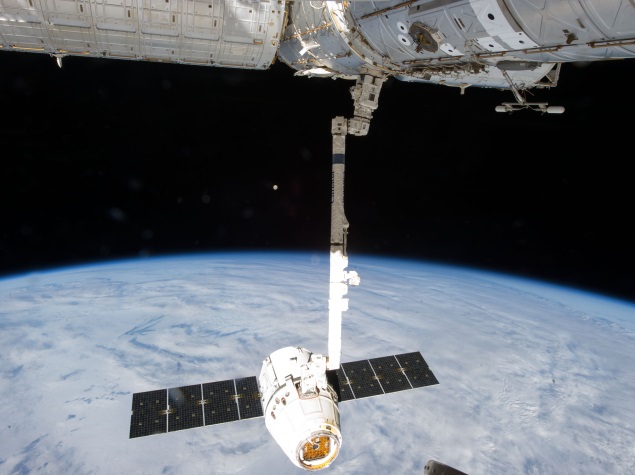- Home
- Science
- Science News
- Nasa Outlines Roadmap for Finding Life Beyond Earth
Nasa Outlines Roadmap for Finding Life Beyond Earth

"Sometime in the near future, people will be able to point to a star and say: That star has a planet like Earth," said Sara Seager, a professor of planetary science and physics at the Massachusetts Institute of Technology in Cambridge, Massachusetts.
The Nasa roadmap will continue with the launch of the Transiting Exoplanet Surveying Satellite (TESS) in 2017, the James Webb Space Telescope (Webb Telescope) in 2018, and perhaps the proposed Wide Field Infrared Survey Telescope - Astrophysics Focused Telescope Assets (WFIRST-AFTA) early in the next decade.
These upcoming telescopes will find and characterise a host of new exoplanets - those planets that orbit other stars - expanding our knowledge of their atmospheres and diversity.
"This technology we are using to explore exoplanets is real. The James Webb Space Telescope and the next advances are happening now. These are not dreams - this is what we do at Nasa," explained John Grunsfeld, an astronaut and associate administrator for Nasa's science mission directorate in Washington.
Since its launch in 2009, Kepler has dramatically changed what we know about exoplanets, finding most of more than 5,000 potential exoplanets, of which more than 1,700 have been confirmed.
Kepler also found the first Earth-size planet to orbit in the "habitable zone" of a star, the region where liquid water can pool on the surface.
"Just imagine the moment, when we find potential signatures of life. Imagine the moment when the world wakes up and the human race realises that its long loneliness in time and space may be over - the possibility we're no longer alone in the universe," said Matt Mountain, director at the Space Telescope Science Institute in Baltimore.
Astronomers think it is very likely that every single star in our Milky Way galaxy has at least one planet, Seager told the Nasa panel.
For the latest tech news and reviews, follow Gadgets 360 on X, Facebook, WhatsApp, Threads and Google News. For the latest videos on gadgets and tech, subscribe to our YouTube channel. If you want to know everything about top influencers, follow our in-house Who'sThat360 on Instagram and YouTube.
Related Stories
- Samsung Galaxy Unpacked 2025
- ChatGPT
- Redmi Note 14 Pro+
- iPhone 16
- Apple Vision Pro
- Oneplus 12
- OnePlus Nord CE 3 Lite 5G
- iPhone 13
- Xiaomi 14 Pro
- Oppo Find N3
- Tecno Spark Go (2023)
- Realme V30
- Best Phones Under 25000
- Samsung Galaxy S24 Series
- Cryptocurrency
- iQoo 12
- Samsung Galaxy S24 Ultra
- Giottus
- Samsung Galaxy Z Flip 5
- Apple 'Scary Fast'
- Housefull 5
- GoPro Hero 12 Black Review
- Invincible Season 2
- JioGlass
- HD Ready TV
- Laptop Under 50000
- Smartwatch Under 10000
- Latest Mobile Phones
- Compare Phones
- Moto G15 Power
- Moto G15
- Realme 14x 5G
- Poco M7 Pro 5G
- Poco C75 5G
- Vivo Y300 (China)
- HMD Arc
- Lava Blaze Duo 5G
- Asus Zenbook S 14
- MacBook Pro 16-inch (M4 Max, 2024)
- Honor Pad V9
- Tecno Megapad 11
- Redmi Watch 5
- Huawei Watch Ultimate Design
- Sony 65 Inches Ultra HD (4K) LED Smart TV (KD-65X74L)
- TCL 55 Inches Ultra HD (4K) LED Smart TV (55C61B)
- Sony PlayStation 5 Pro
- Sony PlayStation 5 Slim Digital Edition
- Blue Star 1.5 Ton 3 Star Inverter Split AC (IC318DNUHC)
- Blue Star 1.5 Ton 3 Star Inverter Split AC (IA318VKU)

















